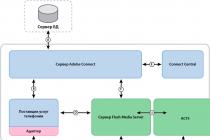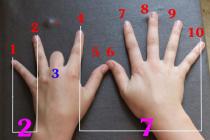In the past two years or so, one word has become increasingly popular in the mobile industry: flagship.
New flagship from Samsung. Which best flagship 2015? Is this the new flagship of Company X?
It is used everywhere, and almost every new one high quality smartphone called the flagship. But what is a flagship smartphone really? What does this term actually mean? Are we using it correctly?
By Wikipedia, the flagship is the best model at the moment, and most importantly, produced in a particular organization.
From this it can be understood that the technical characteristics do not in any way determine belonging to the flagships. Let's take the most good model from explay (Explay AIR) and with its meager characteristics, it is still a flagship, although it did not stand next to the same Samsung Galaxy S6.
Roots of this term go to the navy. The word flagship originated as a naval term used to describe the most important ship in the fleet - or a ship carrying a commanding officer. It also explains why, especially in the mobile industry, the term has become so popular, and ... overused.
If the flagship is the nicest and most revered ship in the fleet at the moment, then it is natural that the smartphone itself high class the company is considered its flagship, right? In most cases, absolutely. But the term is losing its meaning, and not only because of the media.
About a month ago, everyone was expecting the release of the Lumia 730 and Lumia 830. And none of them even claimed the title of flagship. If Microsoft hadn't blurted out the slogan: “830 is the first affordable flagship”.
What does this even mean, I'm sorry Bill, but the Lumia 935 is more like a flagship, and it costs no less than the flagships of other companies? 
In terms of mobile phones, or even more specifically from Samsung's point of view, which model can we call a flagship?
Samsung releases dozens of phone models every year. Of course, only a few stand out in the endless Samsung list smartphones: Galaxy S5 and S6, Galaxy Note 4, and currently Galaxy series Alpha smartphones. Of these, Galaxy Alpha is definitely not a flagship brand.
The other two are regularly referred to as flagships, but that can't be, can it? There is only one flagship.
The flagship has become almost synonymous with "high-end" or "premium", it is not right.
So how to define such a smartphone - by specification, price, or sales volume. I think the flagship doesn't even have to be absolute best phone in the company's lineup. I would say a flagship smartphone is the one that brings the best profit, sells better than others.
Network reception,
Android was still very few people needed and looked like a short-lived experiment like the half-dead Maemo / Meego. Because most of the android phones were still those goners - with poor autonomy, buggy firmware, or a lack of memory. For example, HTC in 2010 released Desire with 576 MB (!) Of internal memory, of which there was even less free space. Sony ericsson sold the flagship X10 with 384 MB of "RAM", ancient Android 1.6, incomplete color display and non-working multitouch! Therefore, Galaxy S, as the only Android flagship brought to mind, provoked a culture shock - nothing of the same quality, with all the bells and whistles working, except for the iPhone, simply did not exist!
Yes, it was frustrating with a weak level of GPS reception (Samsung was just learning to make its own processors), the flagship hardware could hardly pull branded shell TouchWiz, especially the RAM was dirty. But the quality of the display, the sound in the headphones, the rear camera and Galaxy design The S was the best and only competitor to the iPhone. The success was predictable.
|
Samsung Galaxy S (GT-I9000) |
|
|
release date |
June 2010 |
|
SupportAndroid (official) |
Android 2.1, 2.2, 2.3 |
|
Screen |
4 ", 800x480, AMOLED, 233 ppi |
|
CPU |
Samsung Exynos 3110, 1 core (1x Cortex-A8 1.0 GHz), 45 nm |
|
Graphics |
|
|
RAM |
|
|
Persistent memory |
|
|
Connection |
|
|
Cameras |
main: 5 MP, with autofocus, video recording 1280x720, front: 0.3 MP |
|
Battery |
1500 mAh, removable |
|
Dimensions (edit) |
122.4 x 64.2 x 9.9 mm |
|
Weight |
|
Galaxy SII - when power headroom overcame all other innovations
According to many - best Galaxy S ever produced. At one time it was coolly received by "reviewers", because it seemed like a boring piece of plastic with powerful hardware, but practice has shown that ordinary workers needed just an ordinary android phone with excessive performance, a good camera and without showing off like a 3D camera / 3D display (HTC Evo 3D) or game console (Sony Ericsson Xperia Play).
In the broadest sense of the word, the smartphone was really created on the principle of "the same cabbage soup, but pour more". At the same time, cabbage soup was already very expensive, and the processor, although it was better than the “low-power stove” NVIDIA Tegra 2 in the first dual-core processor, LG Optimus 2X, was also very hot and gluttonous. And jokes with lamentations about the autonomy of Android-flagships also began with the Galaxy SII - under load, smartphones worked "from socket to socket" for only a few hours.
But the SII was "stuffed" so much that even today, after 6 years, its characteristics do not look like a laughing stock. A very cool, powerful "mainstream" - a solid phone without experimentation. The competitors were either late and were weaker (HTC Sensation XE with its "under-RAM" 768 MB of RAM and 1 GB of internal memory, single-core Sony Xperia Arc with 512 MB random access memory), or sold overseas (Motorola RAZR XT910) and did not really compete with the "worldwide" Galaxy SII.
In short, the prohibitive characteristics of iron, with a design similar to the first generation, justified itself - the smartphone became wildly popular with the original buyers, and then very slowly decreased in price in the secondary market. Since then, the main complaint against the Galaxy S in comparison with the iPhone has become the case materials - obscenely expensive and plastic Samsung somehow did not please the eye in comparison with glass-metal iPhones.
In those years, Samsung did not yet consider enthusiasts to be the second class of buyers and did not put a stick in their wheels with regional blocking, changing bootloaders and KNOX, so the Galaxy SII is still popular with geeks - if you wish, you can even install Android 7.0 on it.
|
SamsungGalaxyS2 (GT-I9100) |
|
|
release date |
February 2011 |
|
SupportAndroid (official) |
Android 2.3, Android 4.0, Android 4.1 |
|
Screen |
4,3 ", 800x480, AMOLED, 217 ppi |
|
CPU |
Samsung Exynos 4210, 2 cores (2x Cortex-A9 1.2 GHz), 45 nm |
|
Graphics |
|
|
RAM |
|
|
Persistent memory |
|
|
Connection |
3G, Wi-Fi (IEEE 802.11 b / g / n), Bluetooth 3.0, GPS |
|
Cameras |
front: 2 Mp |
|
Battery |
1650 mAh, removable |
|
Dimensions (edit) |
125.3x66.1x8.5 mm |
|
Weight |
|
|
Price in Europe at the time of release |
715/828 euro |
Galaxy SIII - "Soap dish with whistles"
Starting with the third Galaxy S, Samsung began to "comb" its flagships under the new corporate design - instead of the "iPhone, but not the iPhone" appearance, because of which Apple sued Koreans, the flagships received, sorry, licked cases made of glossy plastic.
With such innovations, many Galaxy fans have experienced acute discomfort, the smartphone has forever received the nickname "remnant". But fans have always chosen Galaxy because of its superior performance, and those very characteristics have changed dramatically since the SII - it's no surprise that sales soared and the S3 bought 50% more people than the S2.
Five years later, the Galaxy SIII doesn't look cool at all - it didn't become a “living classic” like the SII, and very quickly “blown away” in terms of prestige / suitability for modern work, unlike peers like the LG Optimus G / Nexus 4 or iPhone 5. And the Galaxy SIII has become the most problematic Samsung flagship in terms of reliability - many smartphones "died" due to premature, and the AMOLED display, not only has become more grainy ("thanks" to Pentile technology), it also has a tendency quickly "burn out". That is, traces of applications or menus were immortalized on the screen.
The processor was also not outstanding - just a "sandwich" of Galaxy S2 cores with outdated graphics. For comparison, Qualcomm already then offered a 28 nm process technology (APQ8064 in LG Optimus G and Xiaomi Mi2) and 2 (!) Times cooler video accelerator for games.
But, starting with the third generation Galaxy S3, the Koreans began to introduce a pack of "whistles" into their top model, which no one used (the only happy exception was the auto brightness of the display):
- Multiple windows... Almost useless at 4.7 inches and not always performing well.
- SVoice... A stupid voice assistant that was only useful in English-speaking countries.
- Gestures and voice commands ... Well, remember, without searching on the Internet, at what command did the Galaxy S3 take a photo? How do I take a screenshot without touching the screen?
- S-Beam... File transfer via NFC. Have you used this function many times or seen its application in practice?
They bought the Galaxy S3 not for the design (which was terrible in comparison with the Sony Xperia S / SL or the same iPhone 5) and not for the perfection of the camera, the primacy in which. The third generation Galaxy was bought up partly by inertia, partly because, although the smartphone was not a leader in each of the individual nominations, all the components in it were of high quality and flagship. And they also bought it for the "adult" diagonal of the display and all the same 4 cores, good sound in headphones and regular release of new versions of Android, unlike LG Optimux 4S, Htc one X or Sony Xperia S, for example.
|
Samsung Galaxy S3 (GT-I9300) |
|
|
release date |
|
|
SupportAndroid (official) |
Android 4.0, Android 4.1, Android 4.3 |
|
Screen |
4.8 ", 1280x720, AMOLED, 306 ppi |
|
CPU |
Samsung Exynos 4412, 4 cores (4x Cortex-A9 1.4 GHz), 32 nm |
|
Graphics |
|
|
RAM |
|
|
Persistent memory |
|
|
Connection |
3G, Wi-Fi (IEEE 802.11 b / g / n), Bluetooth 4.0, GPS, GLONASS |
|
Cameras |
main: 8 MP, with autofocus, video shooting 1920x1080, front: 1.9 MP |
|
Battery |
2100 mAh, removable |
|
Dimensions (edit) |
136.6 x 70.6 x 8.6 mm |
|
Weight |
|
|
Price in Europe at the time of release |
600/650 euros |
Galaxy S4 - an unattainable "spaceship"
The fourth generation of the "galaxy" in its concept was closer to the Galaxy SII than to its predecessor. Because Samsung rallied and built the coolest smartphone of 2013. Eight nuclear processor! Full HD AMOLED display with multiple color modes (even photographers have been pleased)! 0.2-inch bigger screen with a more compact body!
Therefore, the fact that the S4 sold in the same circulation as the S2, that is, in the amount of 40 million units against 60 million in comparison with the Galaxy S3, looks rather strange.
The problem, probably, was that in the three years that have passed since the announcement of the first Galaxy S, competitors have also given birth to balanced flagships, and Samsung users are already tired of the plastic case (a little more elegant, but too similar to the S3), the plump shell and far-fetched software innovations. ... For example, LG G2 "gave a light" to Samsung in terms of display brightness, performance, and video quality, and the platform-based Nexus 5 was also cheaper. HTC One M7, with its stupid camera and weak battery, still looked a lot more expensive. Yes, and "cut" support for LTE (4G) in many countries could also confuse someone. Software innovations like a video pause if you take your eyes off the screen, a slightly wiser S-Voice assistant and stupid photos with sound / photos on two cameras at the same time, as you might guess, did not take off.
He also pulled the blanket over himself, which from an experimental "shovel" with a stylus for artists and businessmen turned into a popular "big Samsung" when phablets were at the peak of popularity.
In any case, the Galaxy S4 has become one of the most technically advanced, popularly loved and "ageless" flagships, to which even Samsung engineers "breathed unevenly" - a situation when the non-Nexus is updated to a new one Android version a couple of years after the release, they are vanishingly rare. This is a smartphone that you can use to this day and not feel deprived of anything (except, perhaps, LTE communications).
|
Samsung Galaxy S4 (GT-I9500) |
|
|
release date |
March 2013 |
|
SupportAndroid (official) |
Android 4.2, Android 4.3, Android 4.4, Android 5.0 |
|
Screen |
5.0 ”, 1920x1080, AMOLED, 306 ppi |
|
CPU |
Samsung Exynos 5410, 8 cores (4x Cortex-A7 1.2 GHz + 4x Cortex-A15 1.6 GHz), 32 nm |
|
Graphics |
PowerVR SGX544 MP3 |
|
RAM |
|
|
Persistent memory |
|
|
Connection |
3G, Wi-Fi (IEEE 802.11 b / g / n / ac), Bluetooth 4.0, GPS, GLONASS, IrDA |
|
Cameras |
main: 13 MP, with autofocus, video shooting 1920x1080, front: 2 Mp |
|
Battery |
2600 mAh, removable |
|
Dimensions (edit) |
136.6 x 69.8 x 7.9 mm |
|
Weight |
|
|
Price in Europe at the time of release |
The Galaxy S5 is neither good nor bad. No
Either Samsung was disgusted with releasing the Galaxy S and the Koreans were preparing to replace it with other models, or it became difficult to snatch a pack of performance and luxury records from the engineering department's bins, but in the fifth generation the smartphone turned out to be ... insipid.
Firstly, Samsung "faked" with the holy of holies - a display and a processor. Yes, Full HD AMOLED, as was the case with the Galaxy S4, only slightly brighter than its predecessor. Is that all? And where is the selected Samsung processor with which Galaxy put competitors on the blades in 2011 and 2013? Why is the buyer of "the most sophisticated alternative to the iPhone" offered the consumer-grade Snapdragon 801, which is even in the unnamed Chinese (OnePlus One)? And why is the Galaxy Note 4, which has always been on the sidelines, not deprived of innovations? And only the lazy did not joke about the nauseous varieties of "young plastic skin" in style and the peeling frame "under the metal". The Galaxy S5 looked especially sad compared to the iPhone 6 of the same year.
But the smartphone became popular not because of the characteristics "on paper", but, as in the case of the first Galaxy S, the quality of the work that was put into it.
Simply because the "most likely" adversary in terms of bells and whistles, the LG G3, was slow, overheated and had little battery life (the processor had a hard time pulling the Quad HD display), and the camera was in it. HTC One M8 firmly established itself in the class "but we have a cool body and stereo speakers!" ) that no one needs expensive Google phones. And in the fight against the Sony Xperia Z2, Samsung had an argument “I'm also Samsung” and a water resistance of the same class. Oh, yes, the fingerprint scanner became another innovation of the model - disgusting in terms of the quality of work, but do you understand how simple such nuances were for workers?
In short, Samsung has got a quality, super-reliable, but very boring flagship. And it was impossible to continue this way, because smartphone sales, and the company's management realized that with such an approach, not today or tomorrow, the great Galaxy S will even be trampled by the powerful "Chinese."
|
Samsung Galaxy S5 (SM-G900F) |
|
|
release date |
February 2014 |
|
SupportAndroid (official) |
Android 4.4, Android 5.0, Android 6.0 |
|
Screen |
5.1 ”, 1920x1080, AMOLED, 432 ppi |
|
CPU |
Qualcomm Snapdragon 801 MSM8974AC, 4 cores (4x Krait 400, 2.5 GHz), 28 nm |
|
Graphics |
|
|
RAM |
|
|
Persistent memory |
|
|
Connection |
4G (LTE Cat. 4), 3G, Wi-Fi (IEEE 802.11 b / g / n / ac), Bluetooth 4.0, GPS, GLONASS |
|
Cameras |
front: 2 Mp |
|
Battery |
2800 mAh, removable |
|
Dimensions (edit) |
142x72.5x8.1 mm |
|
Weight |
|
|
Price in Europe at the time of release |
Galaxy S6 / S6 edge - Samsung's revolutionary flagship with run-of-the-mill sales and childhood illnesses
No top smartphone in 2015 was perfect, but the Galaxy S6 came closest to that bar. All-new, luxurious glass and metal design (Samsung's first non-ugly flagship since the Galaxy S2!), A bright and perfectly calibrated 5.1-inch Quad HD display, the most powerful and hassle-free processor in Android in 2015 (thanks to Qualcomm Snapdragon 810), in random operations inner memory, very high quality rear camera, slim body... And in Galaxy models S6 edge is also a futuristic design, albeit at the expense of usability.
In other words, in 2015, the most beautiful, fastest and technically perfect was born. Samsung flagship in two varieties - flat and curved. Even two years later, only two drawbacks can be noted in it: rather poor (by flagship standards) autonomy and the absence of a memory card slot.
True, defective copies of the S6 were more common than those of the previous generation model. Pink displays, failure of the focusing of the rear camera, purple spots in the pictures on the front camera - this is something that users of Samsung flagships have not seen since the SIII.
release dateMarch 2015
SupportAndroid (official)
Android 5.0, Android 5.1, Android 6.0, Android 7.0
Screen
CPU
Exynos 7420, 8 cores (4x Cortex-A53, 1.5 GHz + 4x Cortex-A57 2.1 GHz), 14 nm FinFET
Graphics
RAM
Persistent memory
Connection
4G (LTE Cat. 6), 3G, Wi-Fi (IEEE 802.11 b / g / n / ac), Bluetooth 4.1, GPS, GLONASS
Cameras
main: 16 MP, with autofocus, video recording 3840x2160,
front: 5 MP
Battery
2550 mAh, non-removable
Dimensions (edit)
143.4x70.5x6.8 mm
Weight
Price in Europe at the time of release
700/850 euros
Galaxy S7 / S7 edge - the client is always right
After the release of the S6, the Koreans had already realized that their comrades were on the right path, but due to the fact that the S6 was selling worse than they would have liked, they made a list of complaints about the old flagship and worked on the mistakes. For example:
- Returned the memory card slot... Of course, the built-in memory is still faster than any type of microSD, but practicality defeated the greed and the manufacturer's manner of selling gigabytes for a high price - isn't it a miracle?
- Returned the water resistance... Which was in the Galaxy S5 and, as it turned out, is in great demand. A trifle, but by Sony flagships hits and allows you to lure their customers.
- Improved the quality of shooting at night... Due to the increased pixel size in the camera, as was done in the Nexus 5X / 6P.
- Releasededge in midsize format... Because the S6 edge +, contrary to Samsung's expectations, did not replace the Note 5 fans and was too big, and the younger edge was too big to dig into the palm with skinny edges.
- Improved autonomy... 3000 mAh on 5.1 inches AMOLED with an economical processor is already a good combination.
The processor breakthrough did not happen this time either - simply because the Snapdragon 820 itself was very good, and the alternative Exynos 8890 only slightly differed from it for the worse in terms of graphics potential (well, Samsung does not know how to design video accelerators on its own). The sleek, streamlined body with flowing lines is the same Asian "jet" that Samsung seems to have just gotten rid of. But - a constant display of date, time and notifications, tools for game lovers (you can lower the quality for greater autonomy, record video in the game) and a prettier TouchWiz shell. Face functions and " a virtual reality”Is also there, because there must be stupid entertainment, it cannot but be!
The sales of the seventh series exceeded all expectations, but we know that this did not happen because of a good life, but because of the Galaxy Note 7 fire. to all former owners the unsuccessful model was given out by the Galaxy S7 edge.
Galaxy S7 is the most "sluggish" generational change in the history of the Samsung flagship (let's not take into account any "under-versions" like S mini, Plus, Neo, etc.), but it is also the most successful, fastest and most comprehensively high-quality smartphone among all generations S, and the coolest model in 2016. Definitely worth buying, especially in the case.
|
Samsung Galaxy S7 (SM-G930F / SM-G935F) |
|
|
release date |
February 2016 |
|
SupportAndroid (official) |
Android 6.0, Android 7.0 |
|
Screen |
5.1 ”, 2560x1440, AMOLED, 577 ppi 5.5 ", 2560x1440, AMOLED, 534 ppi |
|
CPU |
Exynos 8890, 8 cores (4x Cortex-A53, 1.6 GHz + 4x Mongoose 2.3 GHz), 14 nm FinFET |
|
Graphics |
|
|
RAM |
|
|
Persistent memory |
|
|
Connection |
4G (LTE Cat. 9), 3G, Wi-Fi (IEEE 802.11 b / g / n / ac), Bluetooth 4.2, GPS, GLONASS |
|
Cameras |
main: 12 MP, with autofocus, video recording 3840x2160, front: 5 MP |
|
Battery |
3000/3600 (edge) mAh, non-removable |
|
Dimensions (edit) |
142.4 x 69.6 x 7.9 mm 150.9x72.6x7.7mm - edge |
|
Weight |
|
|
Price in Europe at the time of release |
8000 euro - edge |
Most smartphone manufacturers highlight the top devices in the product line, which they pin their hopes on. Such devices are usually called flagships. The flagship is a smartphone that has advanced functionality and is superior in equipment to other models of the manufacturer. The term migrated from the navy, where the most powerful ship in the squadron, on board of which the command is located, is called the flagship.
Flagship - does not necessarily combine the best of mobile world... If the manufacturer is engaged in the production of budget pipes (like many Chinese companies), then the flagship can correspond to the middle class. This state of affairs can be observed, for example, at Philips or Fly. Their tops can only compete with the "average" Samsung or LG. Nevertheless, these are full-fledged flagships against the background of the most massive inexpensive smartphones for $ 100-300.
In their advanced smartphones, manufacturers strive to embody all the advances and new technologies, ready for practical application... If the company has its own powerful research base, then they use latest developments... Firms that use third-party components do not have access to them. In this case, use the best parts that are freely available. Processor suppliers are firms such as Qualcomm or MediaTek, memory is purchased from Samsung, Hynix or Elpida, and displays are purchased from Sharp, Samsung, JDI or LG.
Samsung flagship series
Samsung is the premier flagship manufacturer in the smartphone world. Top-end devices of the company are such not only in the model range of the manufacturer, but also in the market as a whole. This is possible thanks to the concentration of huge resources, the presence of its own departments for the development and production of components, as well as large-scale funding.
In their flagships, Samsung is installing the fastest RAM and permanent memory, latest processors Exynos Octa, Super AMOLED ultra-high resolution (2.5K) screens and quality cameras... All these parts of smartphones are made by Samsung independently and are not available to other companies until the jackpot is made from the sale of new products.
Samsung flagship series from Galaxy S (2010) to Galaxy S6 (2015)
Samsung's flagship line of smartphones is Galaxy S. Top phablets belong to the Galaxy Note series. It is in these smartphones that the main achievements are concentrated.
Apple flagships
Apple has a different approach in terms of the release of flagships. Unlike Samsung, the company does not have its own production facilities. Components are supplied by third-party contractors and assembled. As a result, Apple does not have the ability to fit the most advanced parts. Yes and the lineup, against the background of competitors, looks more modest. Therefore, there are no obvious flagships among the iPhone. Almost every iPhone (with the exception of models positioned as budget ones, like the 5C or SE) can be called a flagship.
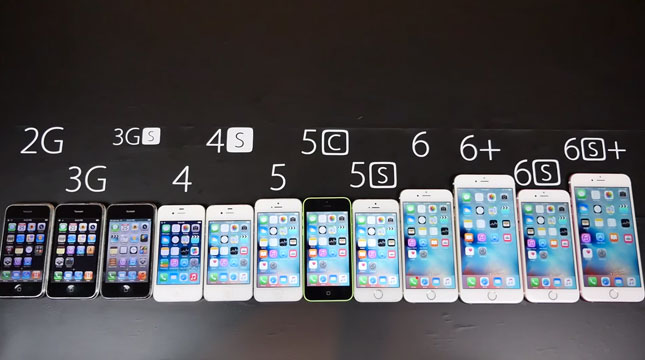
Having no opportunity (and no special desire) "in the forefront" to embody new technologies, Apple prefers to work for the quality of implementation. The company's policy is that it is better to thoughtfully implement a proven technology than to experiment with a new one and "catch" bugs in it. Therefore, the iPhone is the flagship, despite the fact that "on paper" its characteristics can be attributed to the maximum of the middle class.
Other flagship smartphones
LG launches flagship smartphones in the G line, where it also embodies cutting-edge developments in screens and cameras. Sony promoted the Xperia Z series until 2016, in which they also installed best displays(up to 4K) and cameras (up to 22 MP) of our own production. Now the flagship has become Xperia series X.
Other companies do not have such a powerful production and research base, therefore they are forced to use third-party developments. The only exceptions are Huawei, which make their own Kirin processors. Until 2016, HTC produced top-end smartphones in the One M series, but the last flagship of 2016 is named HTC 10, without additional letters.
The most difficult thing is with the determination of the flagships for the Chinese. If Xiaomi and Meizu have it easy with this (Mi and MX series, respectively), then Lenovo, ZTE, Huawei, Oppo do not release special series, which include only pronounced flagships. And the wide range of models does not allow to unambiguously single out the "best" smartphone of the company.
Flagship smartphones are always the most interesting models. After all, they best reflect the level of development of smartphones at the moment. In this article, we have prepared a short overview of the most popular flagship smartphones of 2017.
Samsung Galaxy S7 and Galaxy S7 Edge
Review of flagship smartphones in 2017 is worth starting with Samsung smartphone Galaxy S7. A new version of this smartphone appears every year and it is expected no less than the iPhone. This year, the new flagship from Samsung has received what many fans of this brand have been expecting for so long. Namely, a high-quality premium case. Now Samsung case The Galaxy S6 is made almost entirely of glass and metal.
Another unique feature new version Samsung's flagship is a modification with curved edges. This version of the smartphone has the Edge prefix in the name and differs in that the side edges of the screen are slightly curved towards the end of the device. How convenient this solution is in work can be said only by twisting the device in your hands. But, in any case, this is at least a demonstration of Samsung's technological capabilities.
Concerning technical characteristics devices. The way they are, as always, on the very high level... The gadget runs on eight nuclear Samsung processor Exynos 8890 with graphics accelerator MALI T880 MP12, also in some countries a modification with Qualcomm Snapdragon 820 processor will be available. The volume of RAM is 4 gigabytes, the volume of internal memory is up to 128 gigabytes. The screen of the device is almost the same as in the Galaxy S6, its diagonal is 5.1 inches, and the resolution is 1440 × 2560 pixels. The front camera has not changed either, its resolution is 5 megapixels. Rear camera resolution has decreased, now it is 12 megapixels. Battery capacity 3000 mAh.
For fans of curved screens, as always, there is Galaxy version S7 Edge.
Apple iPhone 6s and Apple iPhone 6s Plus
Apple iPhone 6s and Apple iPhone 6s Plus are already last year's flagships, but until the release of the new version of the iPhone, they remain full-fledged flagships.
The main feature of the sixth generation iPhone, of course, has become the size of the screen. Apple finally went to a significant increase in the diagonal of the screen. Apple iPhone 6 received a screen with a diagonal of 4.7 inches (resolution 750 × 1334), and Apple iPhone 6 Plus screen with a diagonal of 5.5 inches (resolution 1080 × 1920). In the Apple iPhone 6s and Apple iPhone 6s Plus models, the screen sizes and resolutions have not changed.
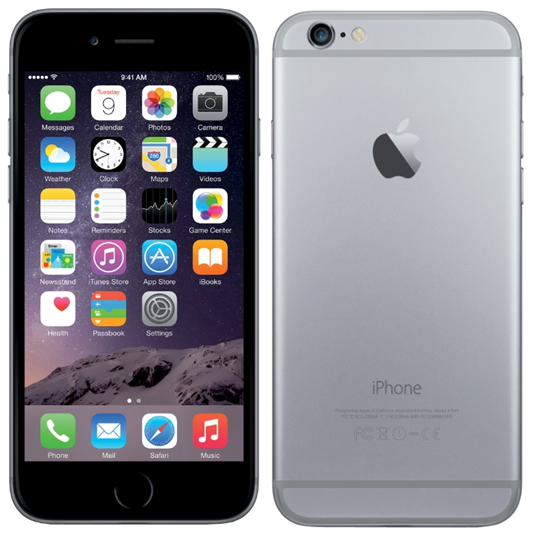
Technical iPhone specifications 6s and iPhone 6s Plus are breaking records. But, this is quite typical for Apple products. It uses a dual-core Apple A9 processor with clock frequency 1.8 gigahertz and 64-bit architecture. PowerVR GT7600 graphics accelerator. The amount of RAM is 2 GB, and the built-in memory is up to 128 gigabytes. The main camera is 12 megapixels, the front camera is 5 megapixels. Battery capacity 1715 mAh.
HTC 10
In 2016, HTC released another modification of its metal flagship. This time the new product is called HTC 10.
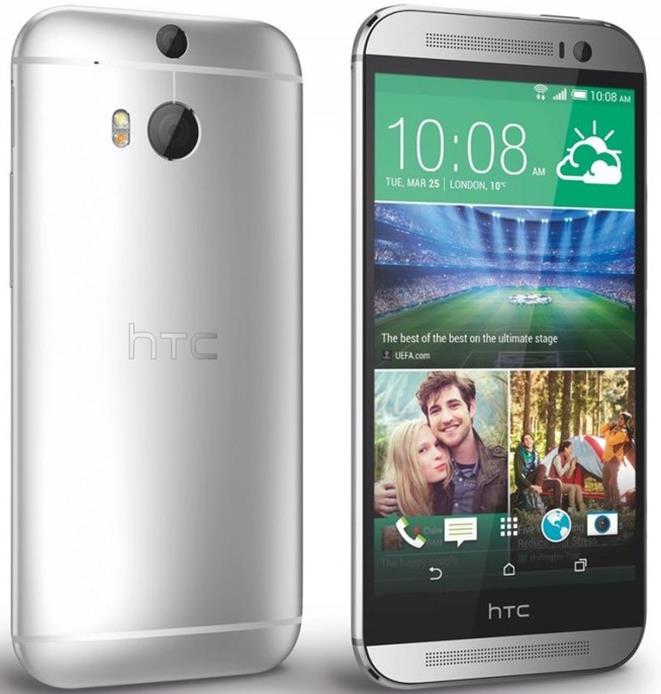
The HTC 10 is a typical flagship smartphone from 2016. It uses four nuclear Qualcomm processor Snapdragon 820 with Adreno 530 graphics accelerator. 4 GB of RAM, up to 128 GB of internal memory. The screen has a diagonal of 5.2 inches and a resolution of 2560 × 1440 pixels. Rear camera resolution 12 megapixels, front resolution 5 megapixels. The battery capacity is 3000mAh.
The Huawei Nexus 6P was unveiled last year, but in 2016 it can still be considered the flagship smartphone. This time Google entrusted the production of its flagship smartphone to Huawei. We will remind, earlier smartphones Nexus were produced by LG and Motorola, and even earlier by Samsung.
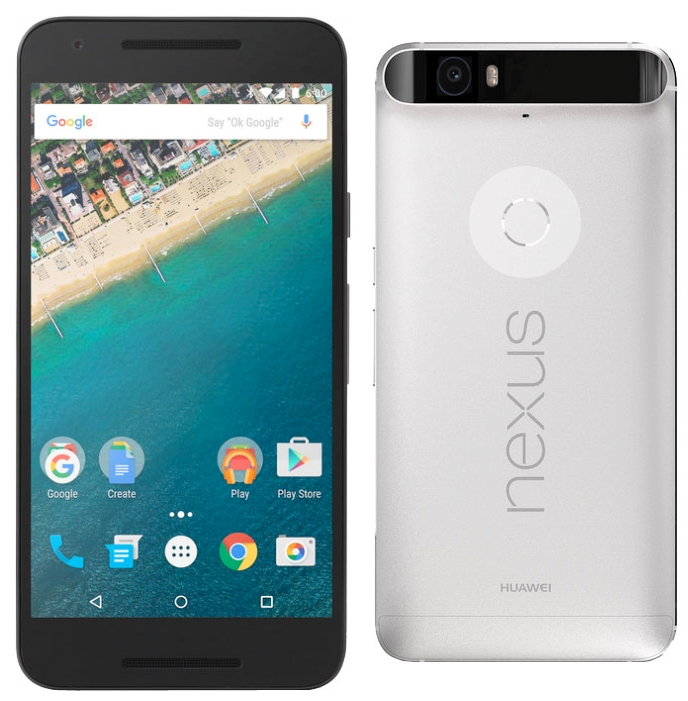
The Huawei Nexus 6P offers top-of-the-line specs that match those of other flagship smartphones in 2016.
It uses an eight-core Qualcomm Snapdragon 810 processor with an Adreno 430 graphics accelerator. The volume of RAM is 3 gigabytes, the amount of internal memory is up to 128 gigabytes. The screen of the device received a diagonal of 5.7 inches, and its resolution is 1440x2560 pixels. Permission front camera 12 megapixels, rear resolution - 8 megapixels. There is also a good battery with a capacity of 3450 mAh.
Sony Xperia Z5
Sony Xperia Z5 - was introduced at the end of last year. But, Sony in 2016 has not yet presented a new phlegman, so consider Xperia model Z5.
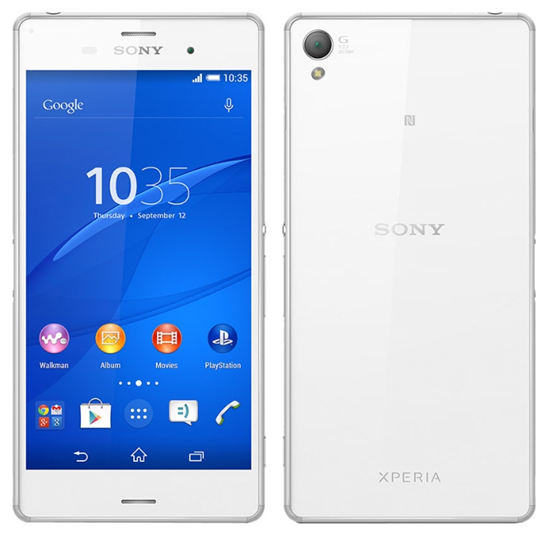
As always, the main strength of the Xperia Z line is its security. No other flagship smartphone has such a level of protection as the flagships from Sony. These smartphones can be immersed in water, thrown into sand or dust and nothing will happen to them.
The Sony Xperia Z5 has got pretty typical specs. It uses an eight-core Qualcomm Snapdragon 810 processor with an Adreno 430 graphics accelerator. The amount of RAM is 3 gigabytes. The diagonal of the screen is 5.2 inches, and the resolution is 1080 × 1920 pixels. The resolution of the main camera is 23 megapixels, and the resolution of the front camera is 5 megapixels. The battery capacity is 2900 mAh.
Lg g5
The G5 is the new flagship smartphone from LG. The main feature this device has become a modular structure. The lower part of the smartphone can be removed and replaced with another, which will give the smartphone additional functions... For example, this way you can get a more advanced camera.
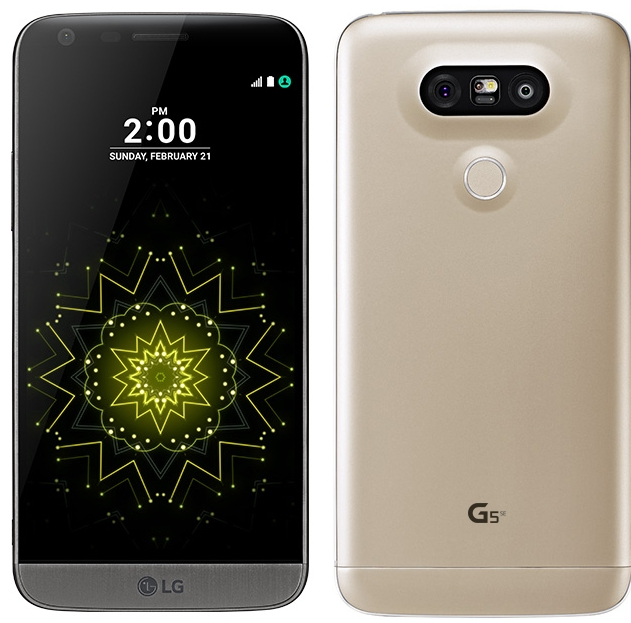
Otherwise, this smartphone does not stand out in anything. It uses a quad-core Qualcomm Snapdragon 820 processor with an Adreno 530 graphics accelerator and 4 gigabytes of RAM. The diagonal of the screen is 5.3 inches, and the resolution is 2560 × 1440. The rear camera has a resolution of 16 megapixels, and the front one is 8 megapixels. Battery capacity 2800 mAh.
New York hosted the premiere of the flagship Galaxy smartphone Note7. New Samsung features a spacious (5.7-inch) and crisp (Quad HD) screen, curved on both sides, a reinforced chassis, and a number of innovative features.
Along with a fingerprint scanner, the gadget is equipped with a biometric sensor that recognizes its owner's iris. "This is a more reliable system biometric authentication to unlock home page, logging into applications and making payments in the Samsung Pay service. Unlike fingerprints, the iris cannot be duplicated because it has a unique pattern, "says the company's engineers.
A quick review of Note7 from The Verge
As noted by The Verge, the new sensor relies on an infrared camera that performs well in low light conditions, but worse in direct sunlight. "It works quickly, but the phone needs to be held close to the face, which is inconvenient," the journalists shared their impressions.
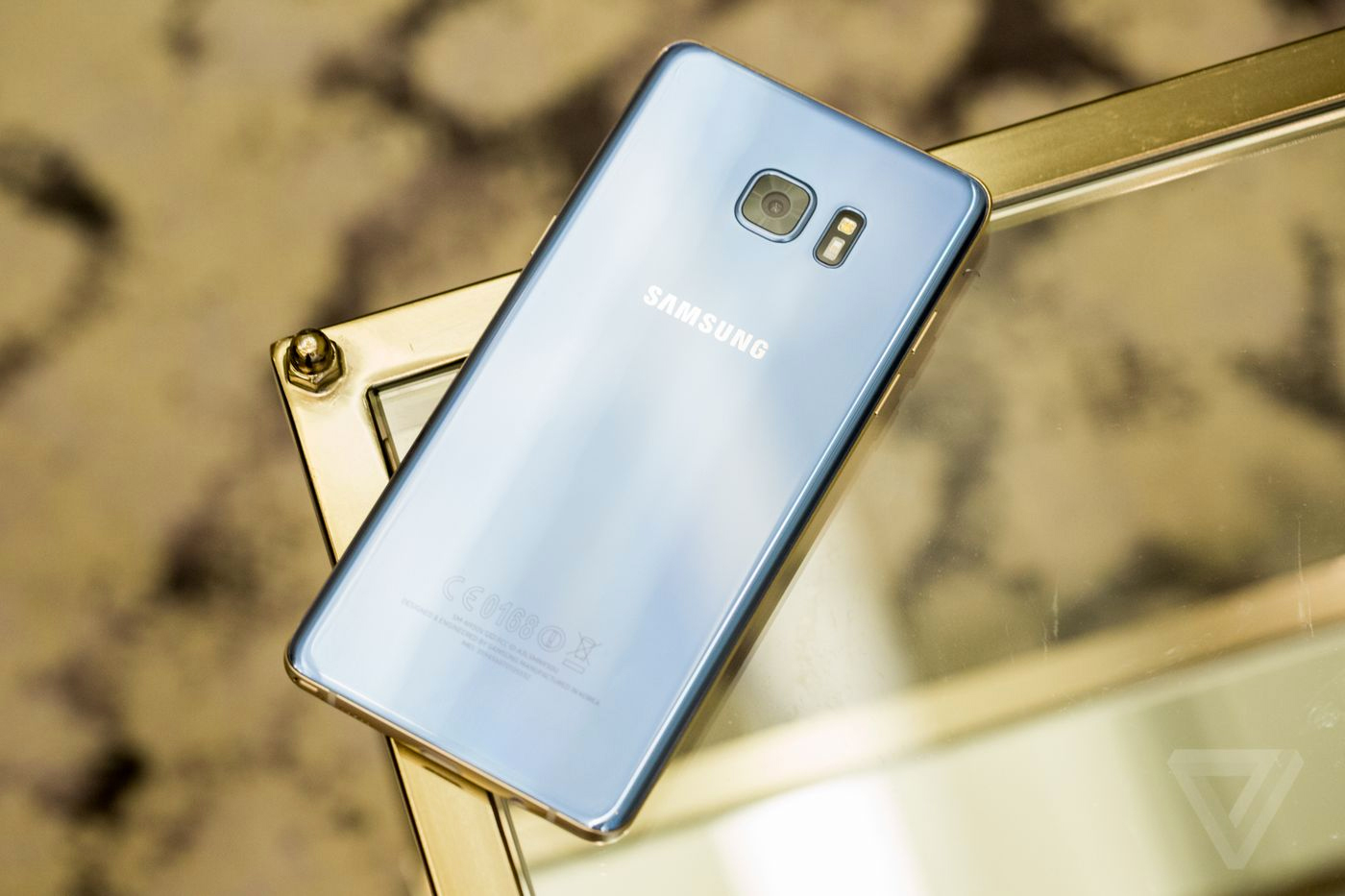
In general, in some situations, a biometric sensor can be more convenient than a fingerprint scanner, when, for example, hands are busy or dirty. It also provides an additional layer of security for the "Protected Folder" - a special section in the OS, in which you can put confidential files and applications containing information about payments, including online banking.
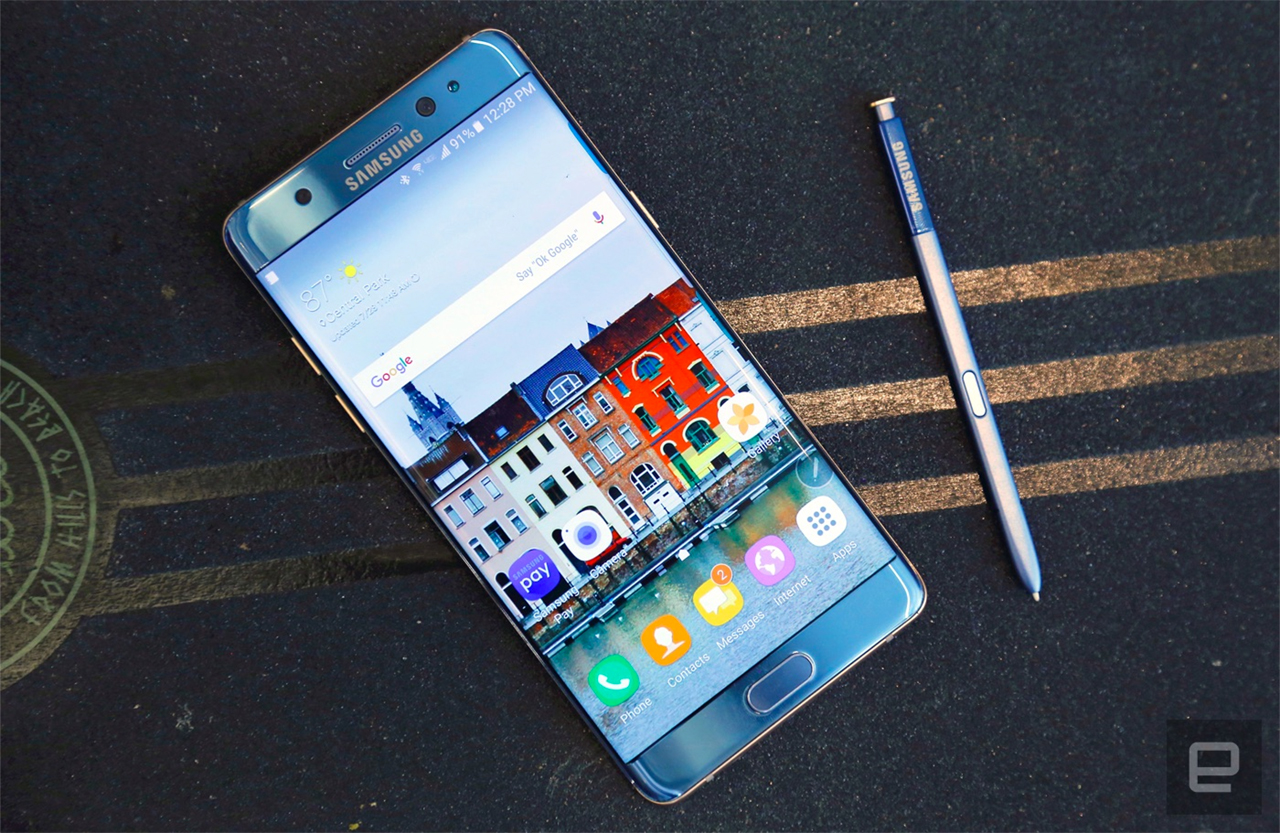
On paper, the Note7 looks like a very promising device. Its main specifications are as follows: Super AMOLED screen (2560x1440, density - 518 pixels per inch), 64-bit processor with eight cores (4 cores x 2.3 GHz + 4 cores x 1.6 GHz), 4 GB of "RAM" ( LPDDR4), 3500 mAh battery.
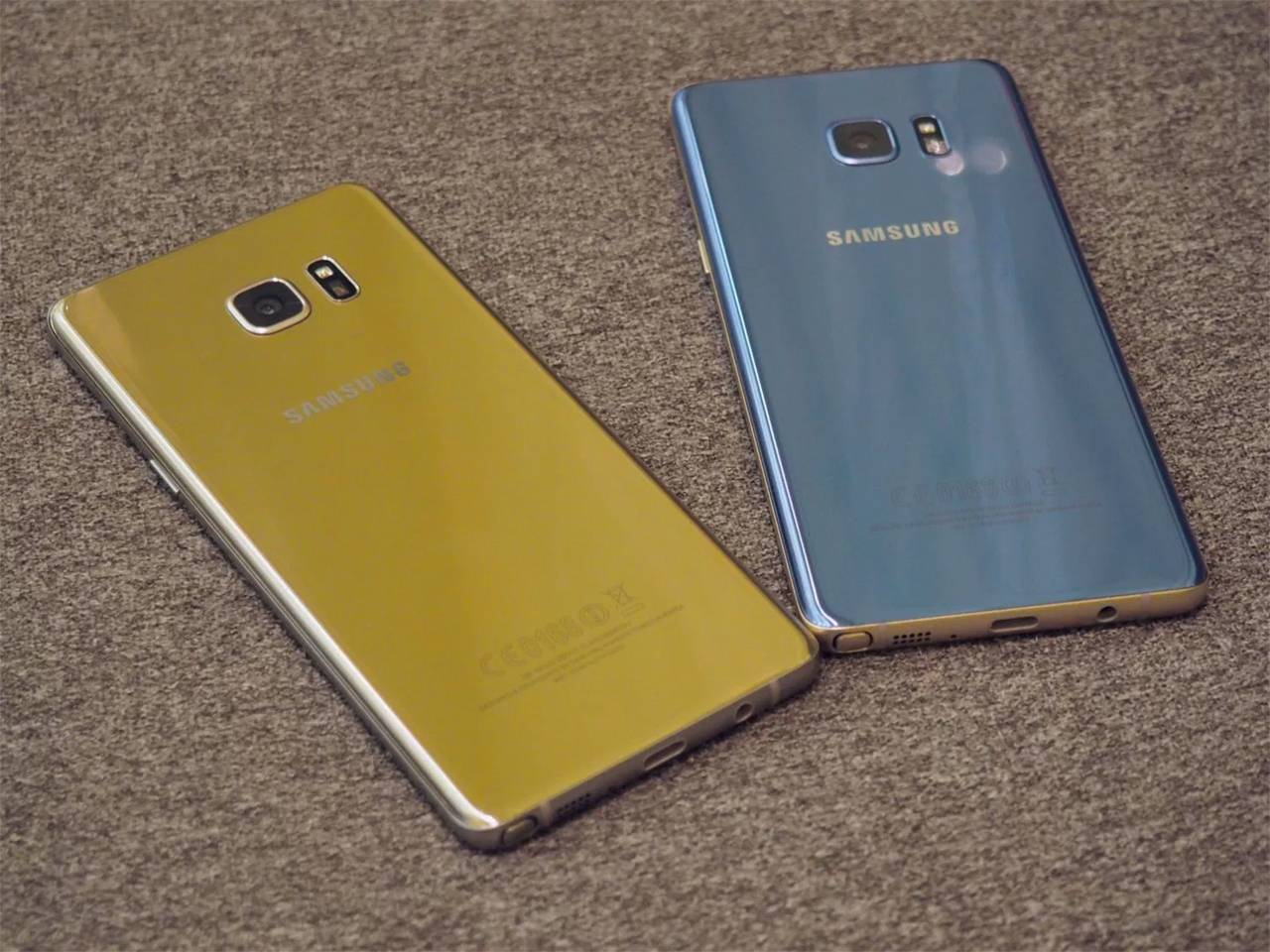
If the built-in memory (64 GB) is not enough, you can connect the "microSD killer" to the Note7 - a memory card with a capacity of 256 GB with support for the UFS 2.0 standard. ...
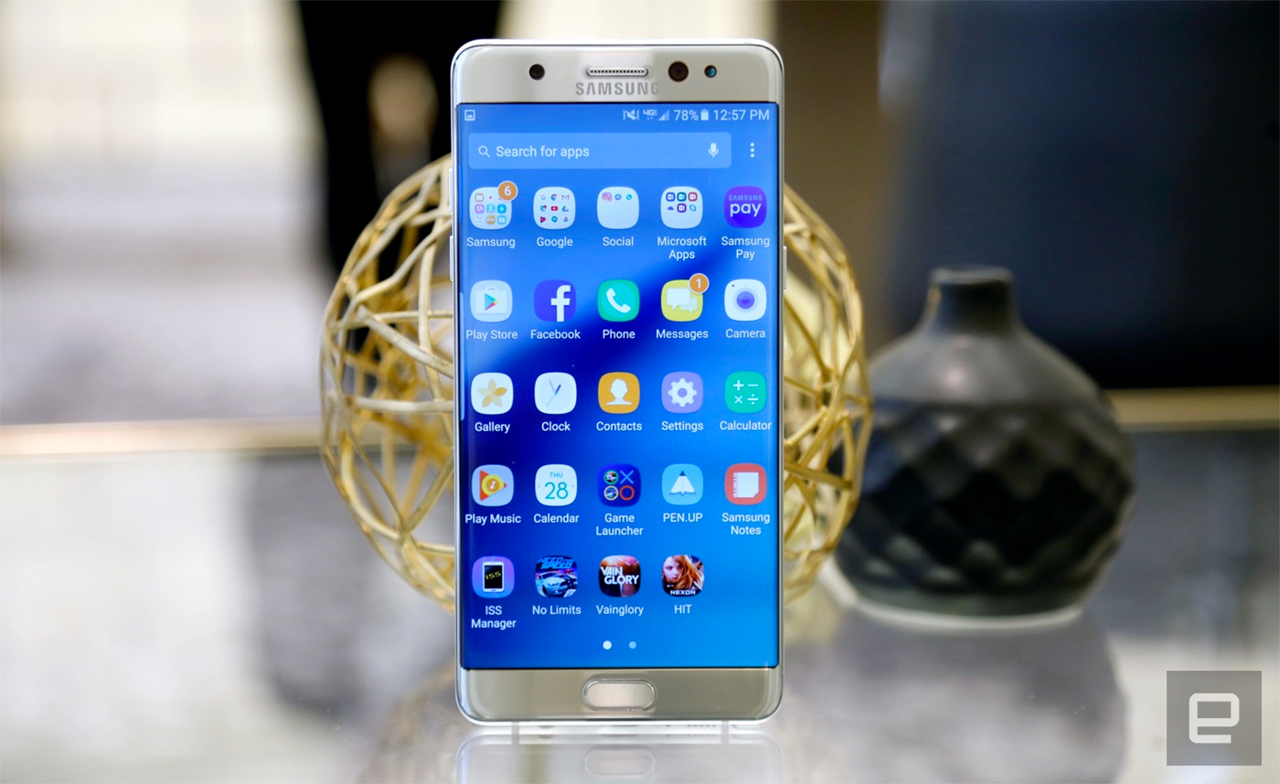
In the UFS standard, the speed of sequential reading of information written to the card reaches 530 megabytes per second - five times faster than that of microSD. This means that UFS can transfer a 5GB Full HD movie in 10 seconds, while a standard UHS-1 microSD card will take about 50 seconds.
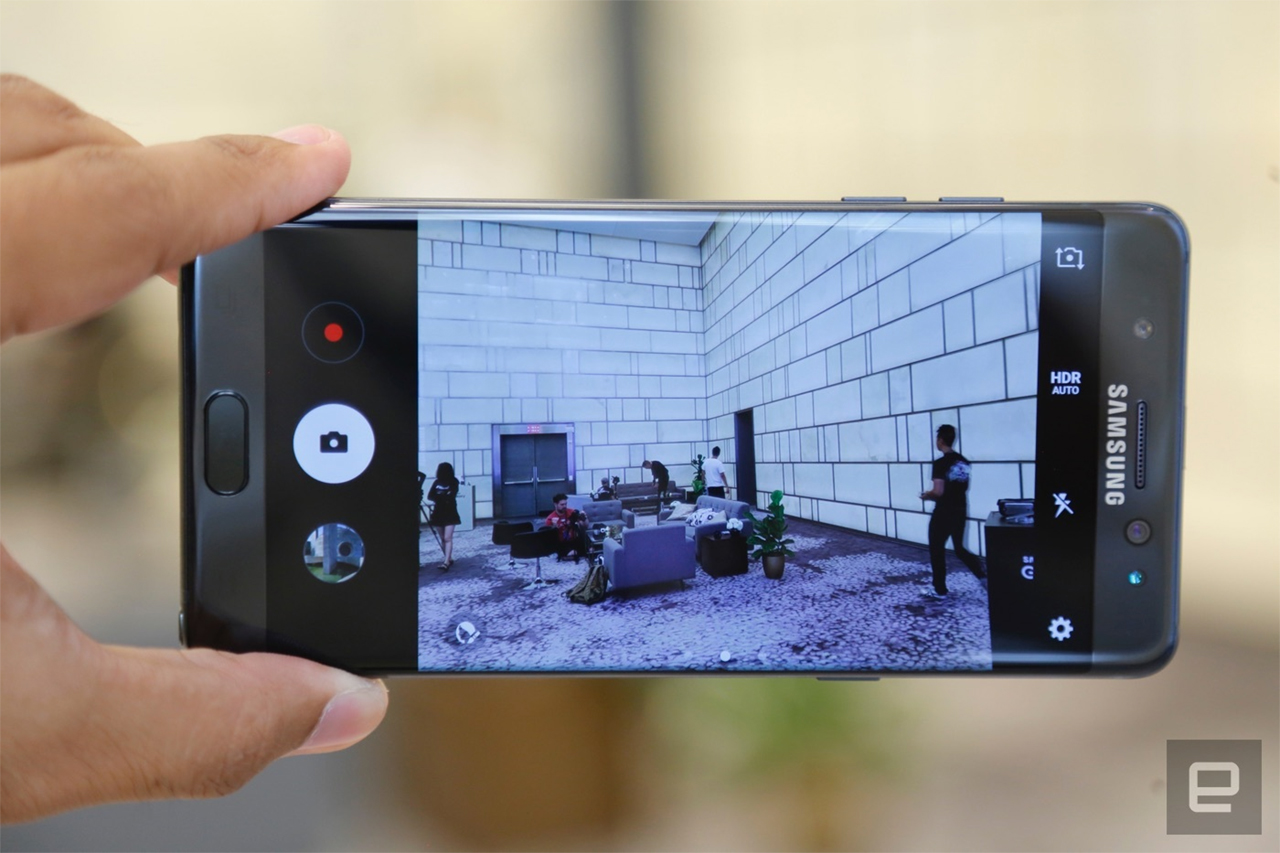
In addition, Note7 can work in LTE networks (Cat.9), supports wireless charging(WPC and PMA standards), has Wi-Fi modules 802.11 (a / b / g / n / ac) and Bluetooth 4.2 LE as well as universal USB port Type-C. The phablet has two cameras: the main 12-megapixel (f1.7) with the function optical stabilization images and a 5 megapixel front camera (f1.7).
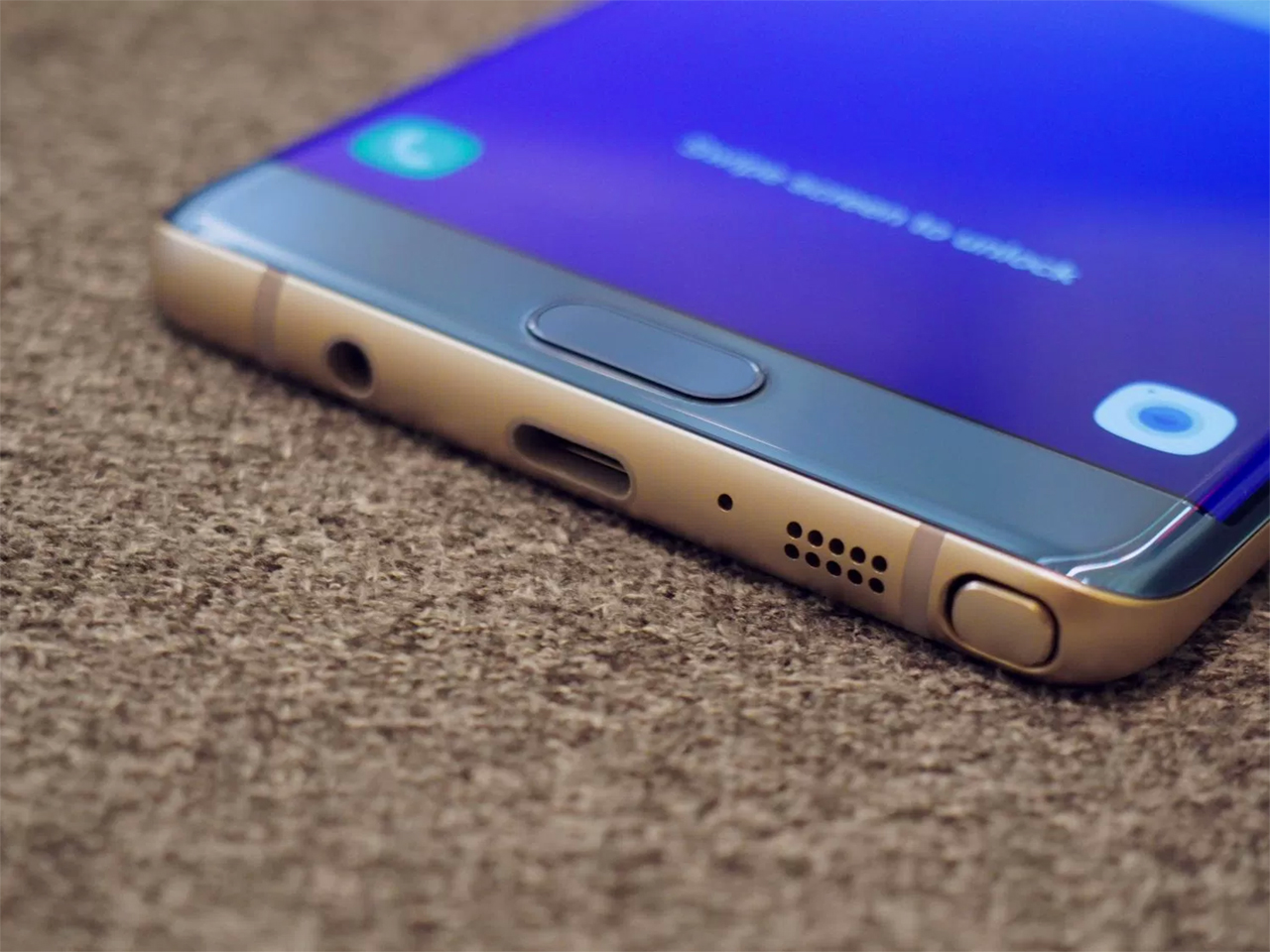
The new product runs on Android 6.0.1 (Marshmallow), which can later be upgraded to 7.0 (Nougat). As noted in Engadget, Samsung slightly cleaned up the TouchWiz shell, removed unnecessary elements, made the interface look similar to Google's corporate design (Material Design), and hid a row with shooting modes and settings from the camera application.
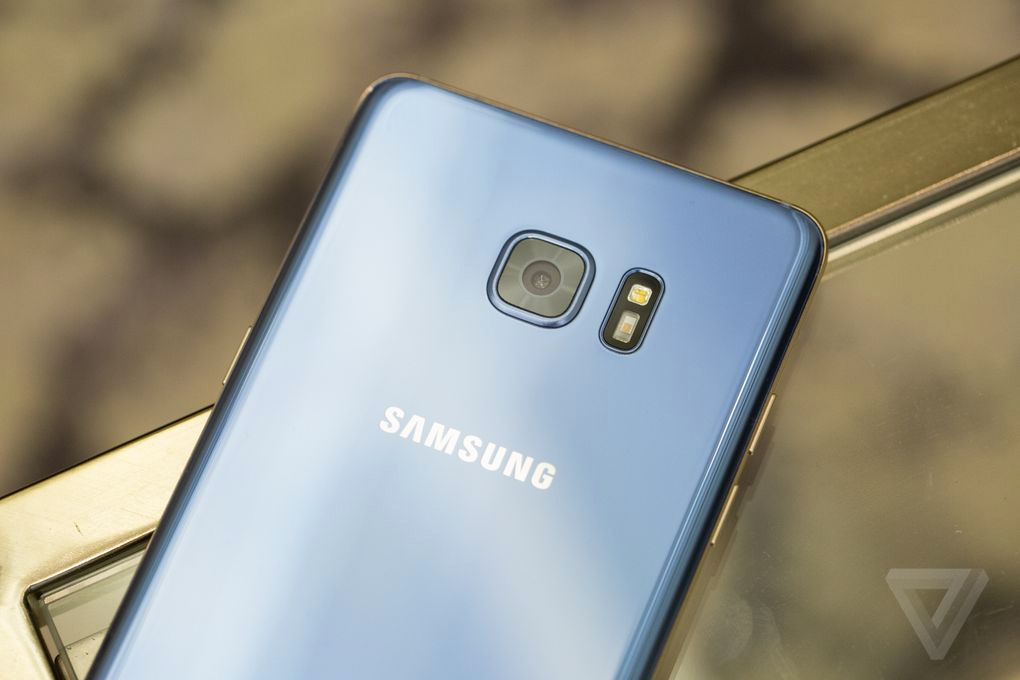
Apparatus Samsung is more compact than iPhone 6S Plus: 153.5 x 73.9 x 7.9 mm, weight - 169 grams. Its "body" is made of 7000 series aluminum alloy, and the screen is protected.
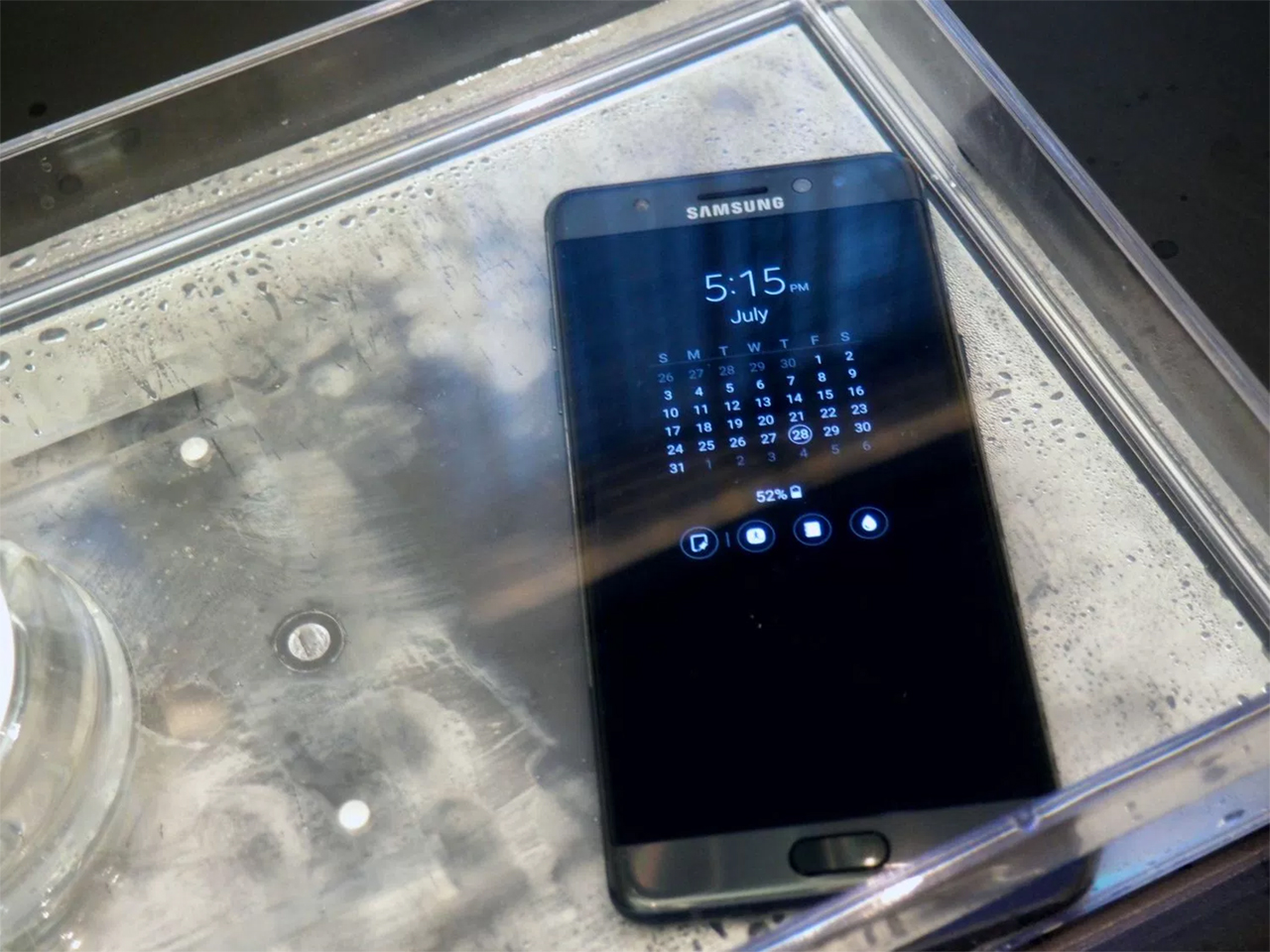
The body of the device, as well as the stylus of the S Pen, are protected from water and dust according to the IP68 standard. The pen is now more comfortable to handle, with a 0.7mm nib diameter for thinner lines and a doubled sensitivity (4096 pressure levels versus 2048 in earlier models). The new electronic "pen", among other things, you can take notes on the screen off, and draw "gifs" and enlarge images with one touch.
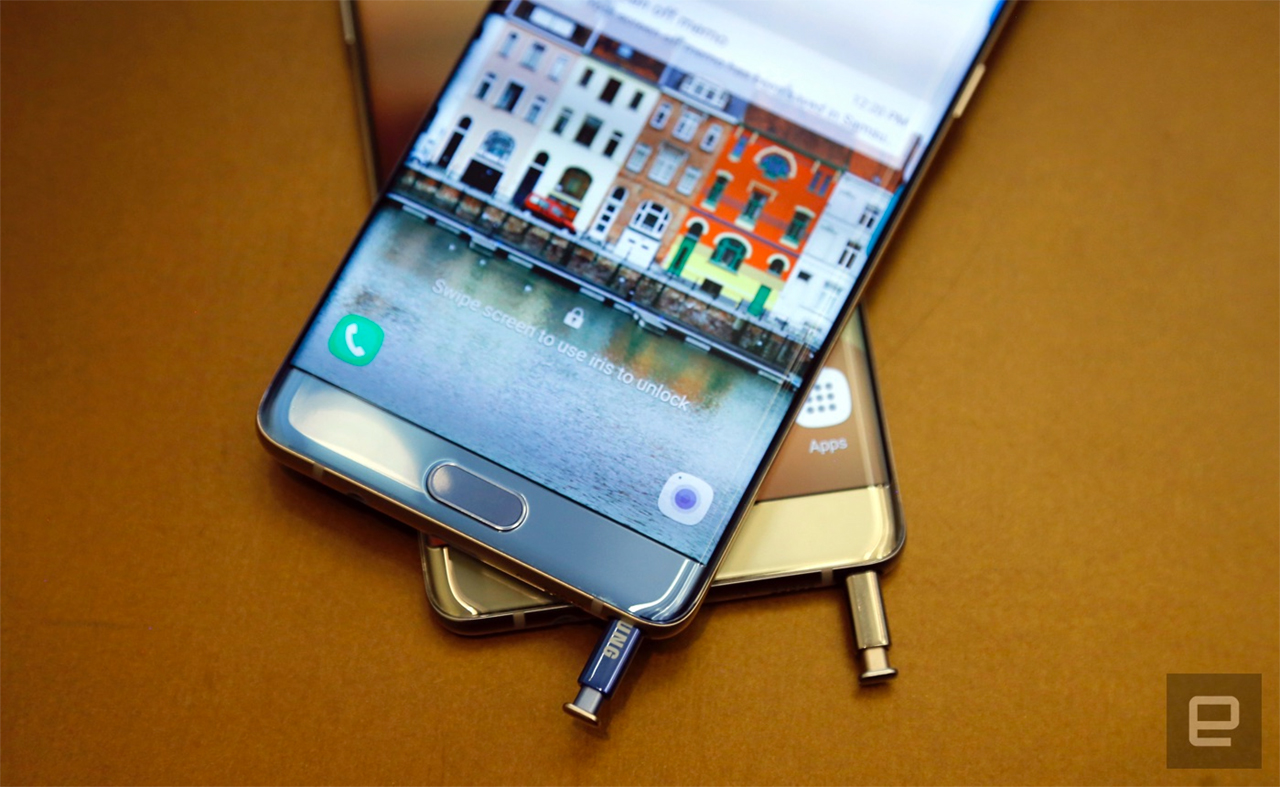
In Russia, sales of new items will start on August 26 at a price of 64,990 rubles. It will be available in three colors: black, platinum and silver. Customers who pre-order (you can do it today) on the Note7, Samsung promises to give the Gear Fit2 fitness bracelet.
Sources: Samsung Press Office, The Verge, Engadget, TechCrunch




